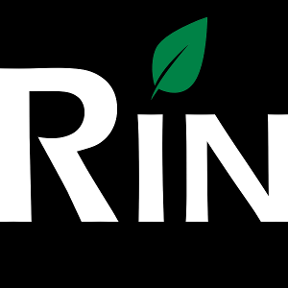Welcome to the Onshape forum! Ask questions and join in the discussions about everything Onshape.
First time visiting? Here are some places to start:- Looking for a certain topic? Check out the categories filter or use Search (upper right).
- Need support? Ask a question to our Community Support category.
- Please submit support tickets for bugs but you can request improvements in the Product Feedback category.
- Be respectful, on topic and if you see a problem, Flag it.
If you would like to contact our Community Manager personally, feel free to send a private message or an email.
Best Of
Re: stl format, extra lines
@ehsan_pazooki
STL is a mesh file format. Inherently, it is just triangle tessellation data with no higher-order division of faces and edges. Can you get a b-rep file for this data to import into Onshape instead of a mesh file? STEP, IGES, X_T (parasolid) are all examples of files we import that would come with more data than just triangle mesh. A full list of supported file formats is here: https://cad.onshape.com/help/Content/translation.htm
STL is a mesh file format. Inherently, it is just triangle tessellation data with no higher-order division of faces and edges. Can you get a b-rep file for this data to import into Onshape instead of a mesh file? STEP, IGES, X_T (parasolid) are all examples of files we import that would come with more data than just triangle mesh. A full list of supported file formats is here: https://cad.onshape.com/help/Content/translation.htm
Re: What's the best way to design complex parts to join together successfully (for example a puzzle)
One solution would be extrude surface, then thicken.
Assuming we are talking stained glass / puzzle pieces... and referring to your link.
At some point you need to have a flat volume of "glass" (your sketch 1 with an extrude)
Draw splines or line work sketch for cut lines (your sketch 2)
Surface extrude the cut lines (sketch 2) - this would be vertically, aka perpendicular to the "glass"
Thicken the surface (either one side of the line, or both for centered) - instead of New, select Remove to eliminate material from the "glass"
Done.
Alternatively, if you want the "lead" in the stained glass, experiment with intersect in Thicken or a Boolean feature (keep tools) etc. This would give you separate parts required.
I like the thicken surface solution because you wind up with a thickness centered on the original line sketch.
LMK
Assuming we are talking stained glass / puzzle pieces... and referring to your link.
At some point you need to have a flat volume of "glass" (your sketch 1 with an extrude)
Draw splines or line work sketch for cut lines (your sketch 2)
Surface extrude the cut lines (sketch 2) - this would be vertically, aka perpendicular to the "glass"
Thicken the surface (either one side of the line, or both for centered) - instead of New, select Remove to eliminate material from the "glass"
Done.
Alternatively, if you want the "lead" in the stained glass, experiment with intersect in Thicken or a Boolean feature (keep tools) etc. This would give you separate parts required.
I like the thicken surface solution because you wind up with a thickness centered on the original line sketch.
LMK
 Theo_R
Theo_R
7
Re: What's the best way to design complex parts to join together successfully (for example a puzzle)
I put together an example using @Theo_R's method for a stained glass window:
https://cad.onshape.com/documents/a601795284ff75dd34f65a27/w/e20702e4e573c43288fe5dd7/e/d4945405c477c239898b4bd4
I used an imported DXF made in Inkscape to define the shape. If you're doing something artistic or making a puzzle, it's probably easier to use a 2D art program or 2D generator (such as a jigsaw puzzle generator) by importing it into a sketch rather than doing it all manually in Onshape. Note that I did some trimming using a "delete face" operation to clean up the frame.
The key to adding the clearance is that the boolean feature at the end (to cut away the frame) has an offset specified as well as "offset all faces" checked. Hope this helps!
Final product:

Close up showing clearances:

Shape designed in Inkscape:

https://cad.onshape.com/documents/a601795284ff75dd34f65a27/w/e20702e4e573c43288fe5dd7/e/d4945405c477c239898b4bd4
I used an imported DXF made in Inkscape to define the shape. If you're doing something artistic or making a puzzle, it's probably easier to use a 2D art program or 2D generator (such as a jigsaw puzzle generator) by importing it into a sketch rather than doing it all manually in Onshape. Note that I did some trimming using a "delete face" operation to clean up the frame.
The key to adding the clearance is that the boolean feature at the end (to cut away the frame) has an offset specified as well as "offset all faces" checked. Hope this helps!
Final product:

Close up showing clearances:

Shape designed in Inkscape:

 alnis
alnis
2
Re: #TraditionalCADsucks
That moment you are in Solidworks and forget you are not in a "part studio"... Well that sketch was a waste of time...
..(Opens a blank part file and starts again from scratch)....

..(Opens a blank part file and starts again from scratch)....

Re: #TraditionalCADsucks
Onshape not only beats other cad software but it makes pretty much all other web apps look like 'hello world' tryouts. Erp, accounting, schedule planning, etc. support / developers explain that you can't have RMB / hotkey / powerfull advanced functions because the UI is made for browser - I have noticed myself always replying with: "Well, we use this 3d cad software called Onshape that also runs on browser.."
To be honest Google and Onshape are the only ones that have succeeded on making actual software that runs on browser, others just feel like sophisticated homepages. IMHO.
To be honest Google and Onshape are the only ones that have succeeded on making actual software that runs on browser, others just feel like sophisticated homepages. IMHO.
 3dcad
3dcad
7
Re: #TraditionalCADsucks
world first social network CADjohn_mcclary said:I guess here is the case and point.. I'm on lunch break and I take that time to use OnShape and browse it's forums..
Re: CAD philosophy: Add or Subtract?
More germane to your question, our parts are about 50/50 additive vs subtractive. In my experience, cast parts are most easily modeled using additive methods, as are most injection molded components. The sheetmetal tools are mostly additive as well. Parts milled or turned from bar stock or extrusion are often easier modeled using primarily subtractive methods, as are parts which are cut from sheet goods (Waterjet, laser, or CNC router), and subtractive approaches help keep the model grounded in what is really possible to manufacture.
Re: Configuration Titles
To get around the current headers limitation this is my preferred workflow.
(1) Set up standard partstudio variables.
(2) Use those variables to control sketches or features.
(3) Use configurations to control the values in the variables.
That way to you get sensible names in the headers, ie the variable names you set.
Hope that helps.
Owen S.
(1) Set up standard partstudio variables.
(2) Use those variables to control sketches or features.
(3) Use configurations to control the values in the variables.
That way to you get sensible names in the headers, ie the variable names you set.
Hope that helps.
Owen S.







